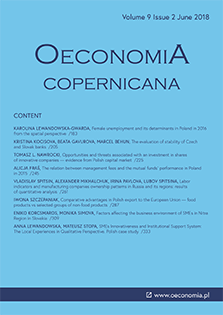The relation between management fees and the mutual funds` performance in Poland in 2015
The relation between management fees and the mutual funds` performance in Poland in 2015
Author(s): Alicja FraśSubject(s): Business Economy / Management, Present Times (2010 - today), Financial Markets
Published by: Instytut Badań Gospodarczych
Keywords: mutual funds; fees; rates of return; risk; regression;
Summary/Abstract: Research background: The investor`s expectation of better performance in the case of more expensive mutual funds seems natural and fully justified. However, the rise of passive funds and their surprisingly good results, especially when taking into account their low fees, triggered the discussion. Recent years have brought more and more studies, conducted mostly for the American market, discrediting high-charging, aggressive funds. First analyses in Poland also indicate that the level of fees is not always linked with the fund’s performance. Purpose of the article: The purpose of the study is to investigate the relation between the fees imposed by the mutual funds and the funds` performance. The idea is to verify, whether higher management fees are associated with top performance and whether it is rational to pay more for capital management. Methods: In the first step of the study, linearity and direction of the dependency was explored, using scatterplots and correlation analysis. In the second part, the linear regression was created to verify the strength of the relation. One-factor models have been built with the rate of return and standard deviation as independent variables for 1-, 3- and 5-year time horizons. Moreover, two-factor models, including both rate of return and risk has been created, to compare the significance of return and risk factor. Findings & Value added: The results indicated that more expensive Polish mutual funds in 2015 tended to perform worse in all tested time horizons — both in terms of lower rates of return and higher risk. Especially unexpected are the results of rates of return regression analysis — it turns out that within a sample 1% higher fee implied over 0.6% lower rate of return before fees (in yearly period). Nonetheless, the risk turned out to be more important, explaining the charges variability much better than the rate of return. Another interesting finding of the study is that merely two simple factors (return and risk) explain even as much as 60% of the management fee variability.
Journal: Oeconomia Copernicana
- Issue Year: 9/2018
- Issue No: 2
- Page Range: 245-259
- Page Count: 15
- Language: English

